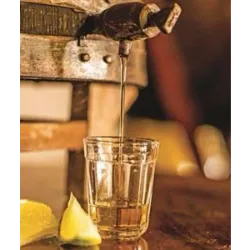The History and Tradition of Distilled Spirits
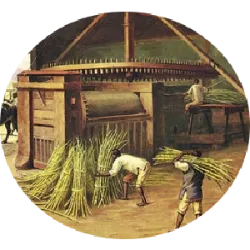
Cachaça plays a crucial role in Brazilian culture, society, and economy, with deep roots in Portuguese colonization and sugar production. Cachaça production began soon after the arrival of sugarcane in Brazil, with the first documented plantation being established in 1504 by Fernão de Noronha on the island of Fernando de Noronha. The first sugar mill was established in 1516 at the Feitoria de Itamaracá in Pernambuco. In the 1530s, the arrival of Portuguese grantees in the captaincies of Pernambuco and São Vicente spurred the expansion of sugar production and the development of new agricultural and settlement areas. Although it is not known exactly where the first distillation of cachaça occurred, it is believed to have occurred between 1516 and 1532 at a sugar mill on the Brazilian coast, making cachaça the first distilled drink in Latin America.
The Evolution of Cachaça

The first Portuguese settlers in Brazil used bagasse and port wine, but they soon discovered a new drink made from fermented sugarcane juice and sugar byproducts, such as molasses and foam. Initially known as "cagaça" and intended for slaves, this drink evolved into cachaça. From 1584 onwards, the term "casa de cozer melis" (honey-making house) came to refer to both sugar mills and cachaça stills. In 1637, naturalist George Marcgraf brought the first boiler for producing sugarcane molasses to Pernambuco. Cachaça, created from byproducts similar to those used in rum and other beverages, became a currency in the slave trade and, with the discovery of gold in Minas Gerais, became highly appreciated by migrants and miners, helping to combat the region's cold.
Test yourself with one of these challenges 👇
Discover some interesting facts about Sugar Cane Brandy
Cachaça quickly became popular among the poorest classes of colonial society
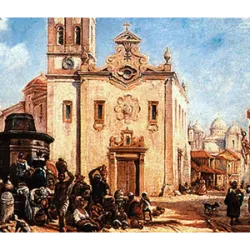
Cachaça quickly became popular among the poorest classes of colonial society, including slaves, for whom the drink was often used as a dietary supplement. It also became an important currency in the African slave trade, reinforcing its economic and social value. Due to the growing popularity of cachaça, which competed with European beverages such as wine and rum, Portugal attempted to prohibit its production and sale in the 17th century. This prohibition was one of the causes of the Cachaça Revolt in Rio de Janeiro in 1660–1661, in which producers rebelled against the imposition of taxes and attempts to limit production. In the 18th century, the prohibition was revoked, and cachaça established itself as the national drink of Brazil, being produced by hand in stills using techniques that give the drink unique characteristics.
Cachaça production in Resende

Cachaça production in Resende began in the 18th century, when the city began to develop economically through agriculture and, especially, sugarcane cultivation. The city became an important center for the production of the beverage during the colonial period, contributing to the local and regional economy. The distilleries of Resende adopted traditional distillation techniques, often using copper stills and natural fermentation, which are essential for the production of superior quality cachaça. The city is known for its distilleries that used traditional distillation techniques. Some famous distilleries in Resende include Alambique Fazenda da Cachoeira, Cachaça do Barão and Alambique Santa Helena, known for their high-quality artisanal cachaças. Although production has declined over time, there is an effort to preserve and revive the cachaça tradition in the region.
Paraty
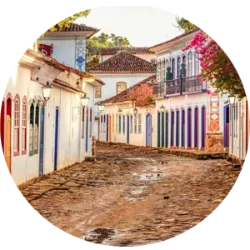
Paraty , in Rio de Janeiro, is one of the traditional birthplaces of cachaça in Brazil, with production beginning in the 17th century. The city stood out for the quality of its artisanal cachaças and its strategic location on the Caminho do Ouro, which facilitated trade. During the colonial period, Paraty cachaça was widely exported and used as currency, facing bans from Portugal due to its popularity. Recognized for its traditional techniques, such as distillation in copper stills, Paraty cachaça received the Geographical Indication seal, which certifies its origin and quality. Today, the city celebrates its heritage with festivals and the Cachaça Route, attracting tourists interested in the rich history and culture of the drink. The 5 famous stills in Paraty are: Alambique Maria Izabel; Alambique Pedra Branca; Alambique Paratiana; Alambique Coqueiro and Engenho D`ouro.
Três Rios
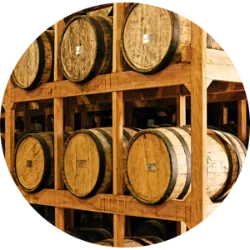
Três Rios , in Rio de Janeiro, began producing cachaça during the colonial period, taking advantage of its ideal conditions for growing sugar cane. The city stood out in the production of the drink, especially during the coffee cycle in the 19th century. The most famous distilleries in the region are:
Engenho São Luiz: Founded in 1931, it is known for its high-quality cachaça and traditional distillation methods.
Engenho São Jorge: Founded in the early 20th century, it maintains traditional techniques and is renowned for its premium cachaça.
Fazenda do Ouro: It stands out for its cachaça aged in wooden barrels, produced in an artisanal way.
Production faced challenges due to industrialization, but there is currently a rebirth of artisanal cachaça, with the appreciation of traditional techniques and growing interest from consumers.
National Cachaça Day is celebrated on September 13th
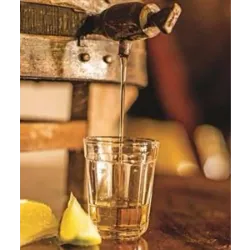
National Cachaça Day is celebrated on September 13th and celebrates one of Brazil's most emblematic drinks, cachaça, which is distilled from sugar cane. The date aims to honor the tradition and culture associated with cachaça, as well as promoting awareness about the responsible consumption of this drink. During this occasion, events, tastings and cultural activities take place across the country, providing connoisseurs with the opportunity to discover new brands, learn about production methods and enjoy the varieties of this drink that is so important to Brazilian identity.
celebrate in September 13
HOME
